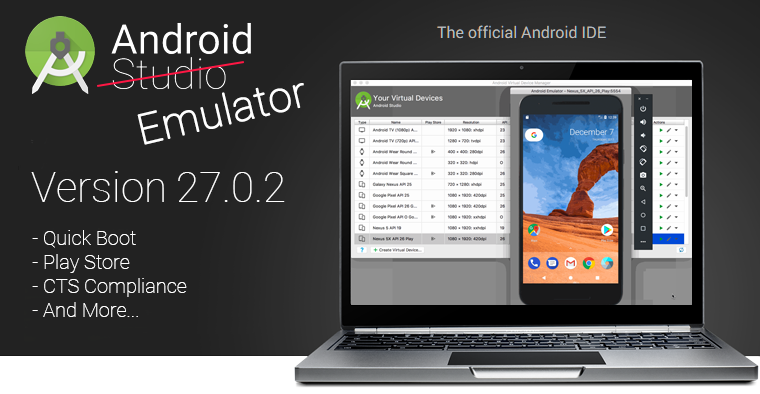Back in October, Android Studio 3.0 was set loose to the stable channel with improved support for the Kotlin language, platform technologies like Android Things, and many other new and improved features. At the same time, a major upgrade to the Android Emulator also went out to developers on Android Studio's canary channel. It came with quite a few enhancements, but the the headliner was Quick Boot, which can reportedly achieve startup times of less than 6 seconds. Today, this version of the emulator reaches the stable channel and the Android Tools team posted about many of the other valuable improvements this update brings.
Quick Boot
Quick Boot works more like the snapshot features of some mainstream virtual machine platforms. Instead of performing a cold boot, a snapshot can be reopened to the state it was in prior to the last time it was closed. This is roughly comparable to waking a device from sleep mode.
According to Google, the re-engineered snapshot support allows the emulator to start up in under 6 seconds. This is obviously dependent on underlying system performance and specs, but any computer will see significantly faster startup times. Launching the emulator won't be an excuse to go for a cup of coffee anymore.
Play Store Support
One of the challenges to developing apps with in-app purchases, or anything that requires the Play Store API, is that developers had to switch to a physical device to test them. The official emulator images didn't ship with a version of the Play Store, which meant apps had to be sideloaded and some of the Google Play services weren't available. But that's not going to be a problem anymore; the Play Store app and services are now included with emulator images for API 24 (Nougat) and above.
Other enhancements
Google's blog post highlights Quick Boot and the addition of the Play Store. It also points out that the emulator images for API 24 and above are now Android CTS (Compatibility Test Suite) compliant and there are many other performance enhancements. In particular, the Android Emulator is now more efficiently managing RAM usage through the Mac and Linux hypervisors and a new version of Intel HAXM on Windows. There are also further optimizations to CPU and I/O performance, and improved OpenGL ES 3.0 support.
A host of other features have also been added with recent iterations of the emulator, many of which bring parity with competing emulators and simulators on the market. These include simulated Wi-Fi connectivity (as opposed to just simulated cellular), Google Cast support, drag and drop installation for APKs and copying for other files, cross-platform copy/paste, 2-finger pinch, and much more. Check out Google's blog post for the full list.
If you've been sticking to the Android Studio stable channel, the latest emulator (v27.0.2) should be available to you today. Just update it through Android Studio and have fun with the faster launch times and other upgrades. If you're already on one of the earlier-access channels, the new emulator should have already been available to you, but it may be worth skimming Google's full list of enhancements in case there's something you hadn't already noticed with previous updates.
Source: Android Developer Blog

